Following National Highway 1, from Da Nang to Hue, passing the Hai Van tunnel, looking down, you will see An Cu village at the end of a long stretch of sand on the coast, in Chan May - Lang Co commune (old Lang Co town). For those who are adventurous and like to ride to conquer Hai Van pass from south to north, after going through 21 km of dangerous pass road, looking down at Lang Co bay, An Cu village appears like a watercolor painting with one side being a long stretch of white sand with waves lapping, the other side being An Cu lagoon (also known as Lap An lagoon) leaning against the majestic, deep blue Hai Van range.
Lang Co has long been known as a place where mountains converge with calm sea waves and peaceful green space. In 1916, during a royal trip to Quang Nam to examine customs and practices, King Khai Dinh stopped at Lang Co and found the beauty of this place like "a paradise". After returning, the king built Tinh Viem palace and wrote a stele to record the mark, proving the beauty of this land.
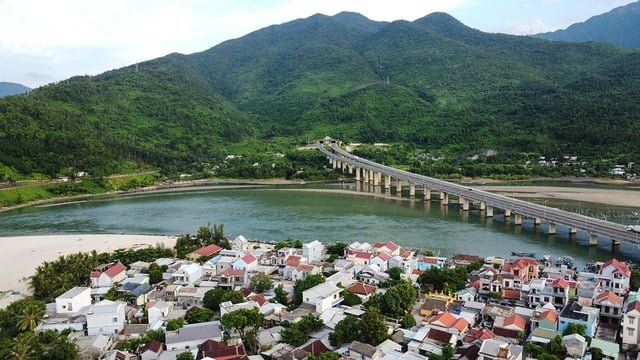
An Cu Dong village looking up Hai Van pass
PHOTO: LONG NHAN
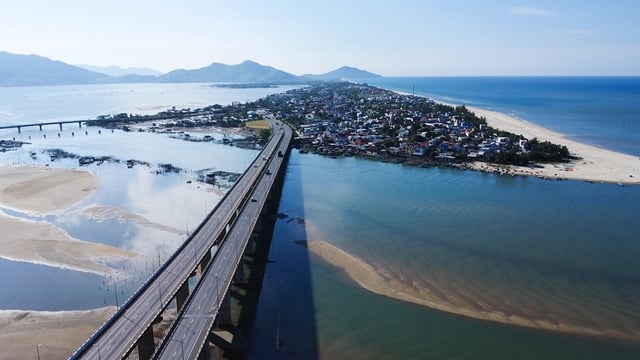
An Cu Dong Village is located on Lang Co Bay.
PHOTO: LONG NHAN
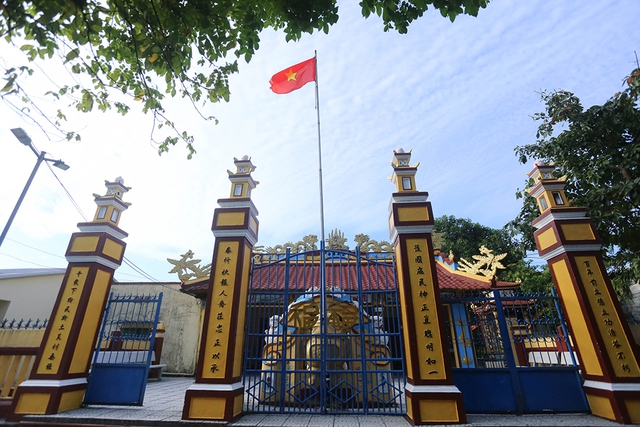
An Cu Dong communal house in the world beautiful bay Lang Co
PHOTO: LONG NHAN
In the stele, King Khai Dinh described: "... Here the mainland meets Phu Gia mountain, the sandbank stretches across, the water meets the ocean, the river flows around. The towering mountains embrace behind, the lagoon stretches forward. The south borders Hai Van pass, the north borders Canh Duong seaport. The village is quiet, the island is deserted, everywhere the trees are green and the clouds are pink; the cranes are on the beach, occasionally the sound of woodcutters and the oars of fishermen echo. Looking towards the mountain, one sees strange clouds rising from caves, like fairies dancing in the mountains; looking down at the water, the clear wind drives the waves, like thousands of horses returning. Only then does one stop the carriage and look around, happily looking around, seeing the fresh air, the gentle wind, the joyful scenery, the beautiful things. Looking for a long time, one suddenly feels cool all over, the heat disappears, the heart feels joyful, and the scene inspires feelings..." (translation by researcher Phan Thuan An from the original Chinese text). The stone stele is still located in An Cu Dong village. The stele's inscription is dated February 24, the 4th year of Khai Dinh (March 25, 1919).
In May 2009, at the 5th Summit of the Worldbays Club held in Setubal (Portugal), 3 beautiful bays of Vietnam including Ha Long Bay, Lan Ha Bay and Lang Co Bay were officially admitted to the Worldbays Club.
K SINGING FOR DEVELOPMENT
Different from the bustling urban and tourism development of Lang Co along both sides of National Highway 1, following the small concrete road turning down to the foot of the bridge is the way to the peaceful An Cu village with rows of houses close together. The village has a church with a soaring bell tower blending with the village communal house and ancient village pagoda, creating a harmonious spiritual and cultural nuance.
The village elders said that An Cu village was formed more than 500 years ago, following the footsteps of the Vietnamese people moving south on their journey to open up new lands. After settling on the new land, those who followed the forest profession moved to the mountains named Hoi Dua and Hoi Mit, separating the village into An Cu Tay. Those who followed the fishing profession, living on the sea, moved to the sea to establish An Cu Dong village, which exists until today.
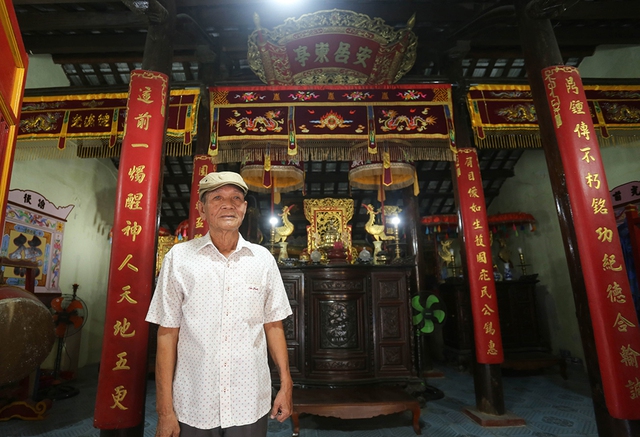
Village Chief Truong Cong Chien at An Cu Dong communal house
PHOTO: LE HOAI NHAN
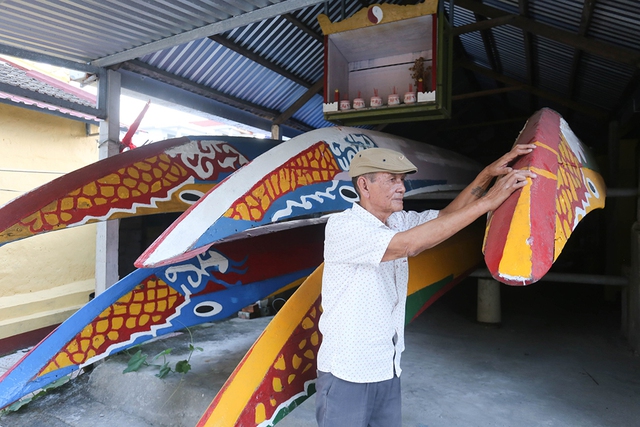
Traditional racing boats are carefully kept by villagers in a shelter behind the village communal house.
PHOTO: LE HOAI NHAN
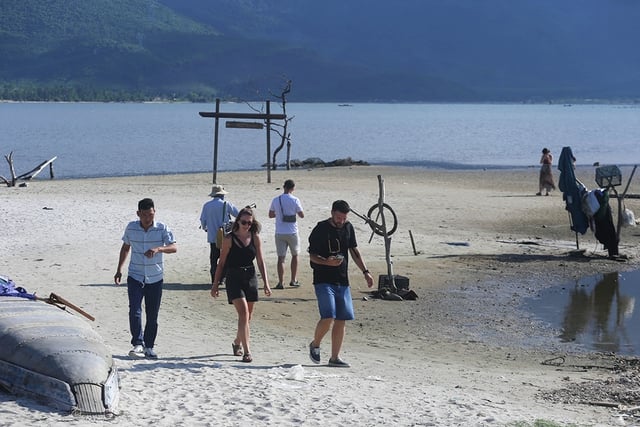
Tourists come to Lang Co Bay but seem to not know about An Cu Dong village.
PHOTO: LE HOAI NHAN
Mr. Truong Cong Chien, 73 years old, head of An Cu Dong village, said: "According to the elders, the village was formed in the post-Le dynasty. For the first 80 years, the village was called by the simple name Cay Mit toc. During the reign of King Le Hien Tong (1461 - 1504, reigned from 1497 - 1504), the village was changed to Phuoc An Kieu Cu. During the Nguyen dynasty, in 1831, King Minh Mang, in the process of rearranging the administrative boundaries across the country, renamed the village An Cu and has kept it until now."
An Cu village currently has more than 4,300 households, living off the sea and the forest. "When the weather is nice, villagers go fishing near the shore, when the weather is rough, they anchor their boats, bring axes and machetes to the mountains to chop firewood, collect rattan, and collect medicinal herbs," said Mr. Chien.
He proudly added that for generations, the villagers have preserved traditional festivals, such as the boat racing festival in January; the peace-praying ceremony in February to expel diseases, evil spirits, and filth; the autumn festival in August and the 25th of December, closing the forest to rest and prepare for the new year. On the 6th of January, the village holds a spring opening ceremony, reopening the forest to return to normal life. Talking about tourism development, Mr. Truong Cong Chien shared: "There is almost no tourism here, visitors only stop at Lap An lagoon, across the national highway, eat and drink and then leave."
Despite living a quiet life, the locals still want tourism to develop to unleash the local potential. Mr. Van He (68 years old, living in An Cu Dong village) said: "We want the village to be known by more tourists so that the locals can participate in developing services. Along with the merger into the new commune of Lang Co - Chan May, the people of An Cu village hope that the new government can find a harmonious development direction so that the locals can benefit from tourism."
"How can Lang Co exploit its natural beauty to develop tourism, attract investment, and create conditions for people to benefit, improve their lives and preserve traditional values?", Mr. Van He expressed.
Source: https://thanhnien.vn/nhung-ngoi-lang-tuyet-dep-ven-bien-yen-binh-an-cu-185250817230720281.htm


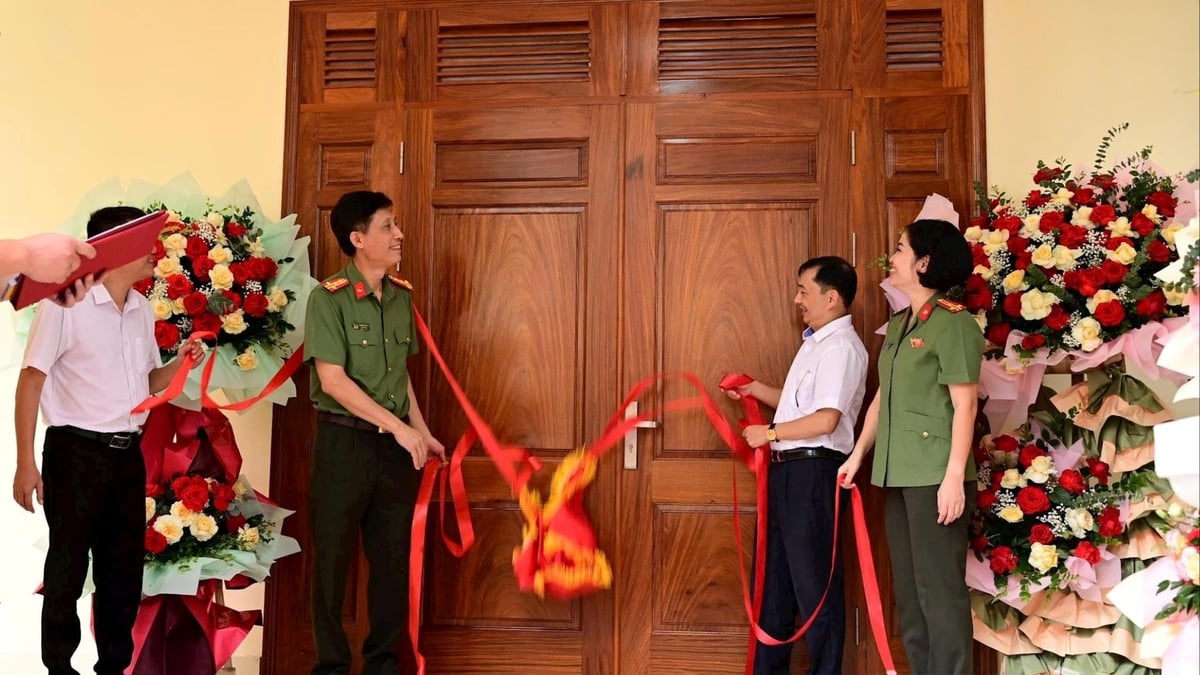

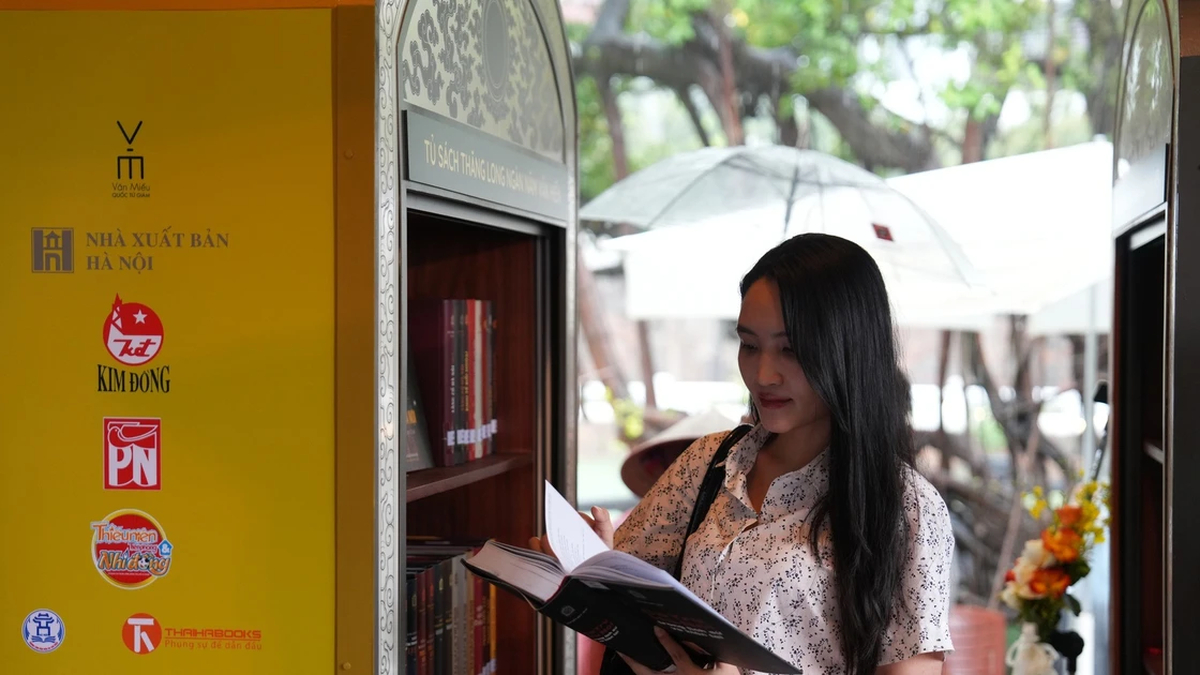
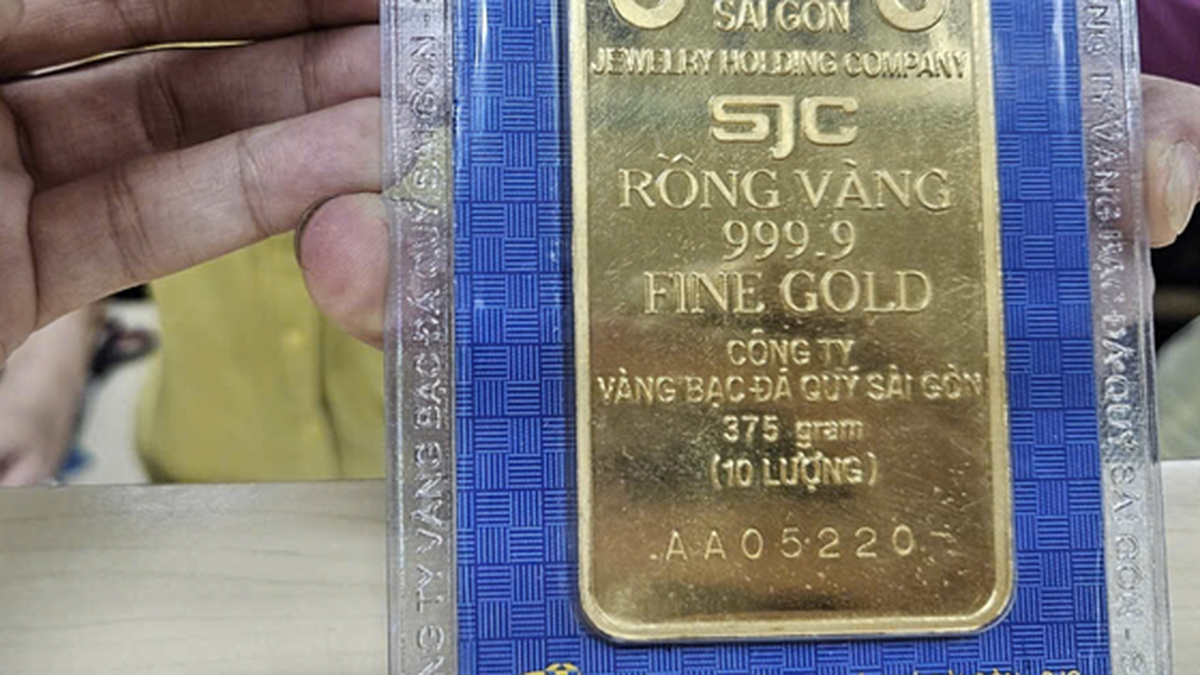



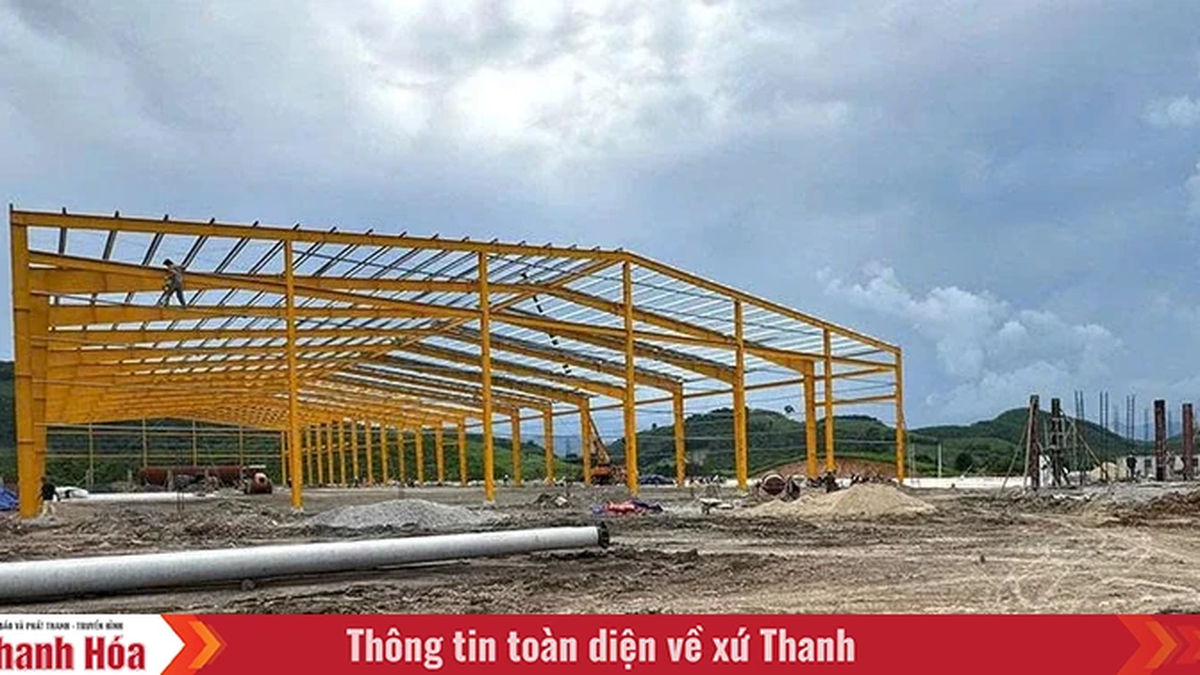













![[Photo] Prime Minister Pham Minh Chinh attends the opening ceremony of the National Data Center](https://vphoto.vietnam.vn/thumb/1200x675/vietnam/resource/IMAGE/2025/8/18/b5724a9c982b429790fdbd2438a0db44)
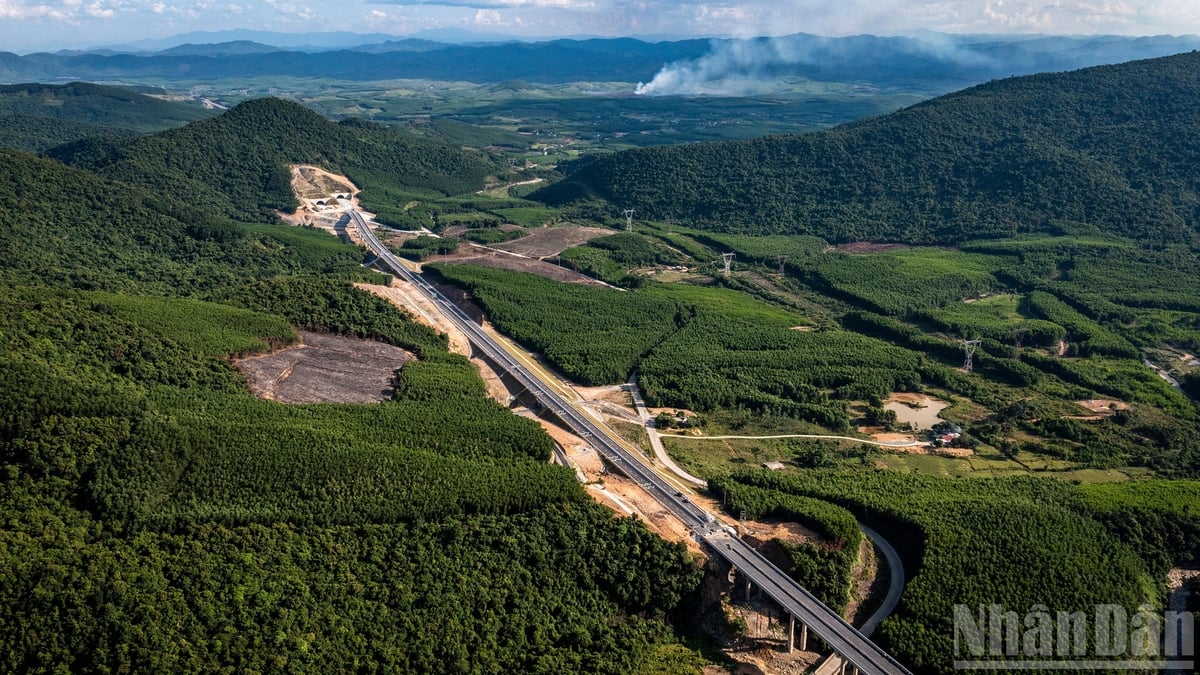

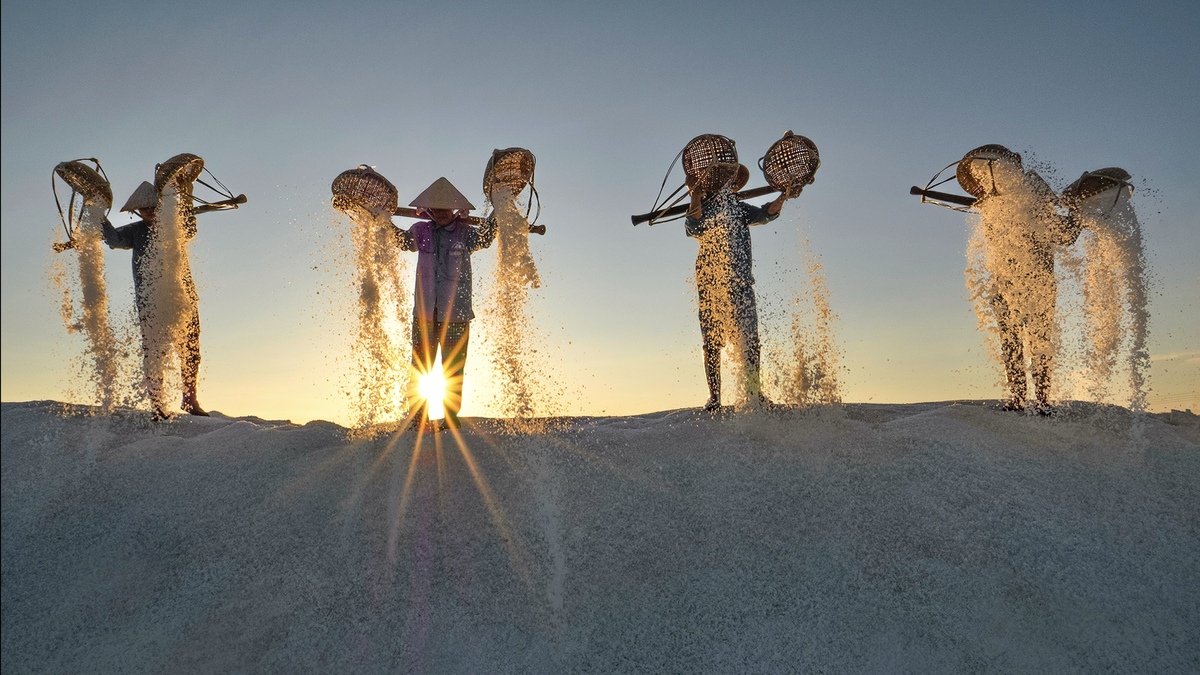







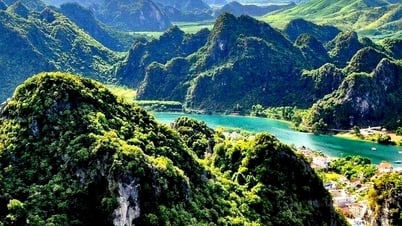

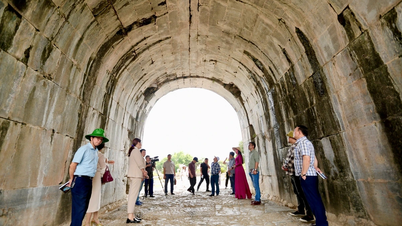





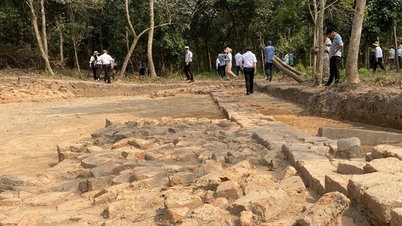




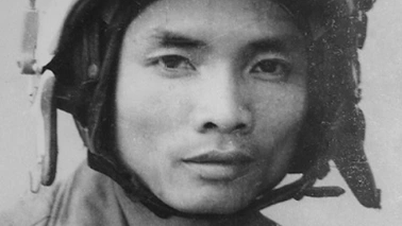











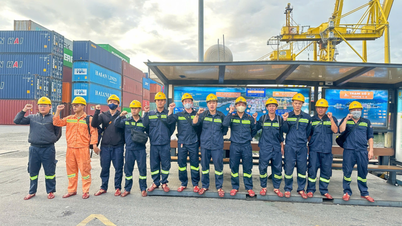
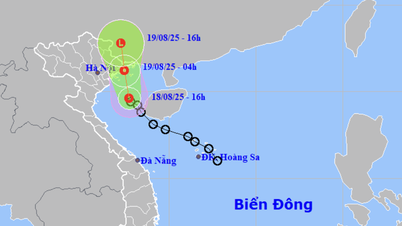

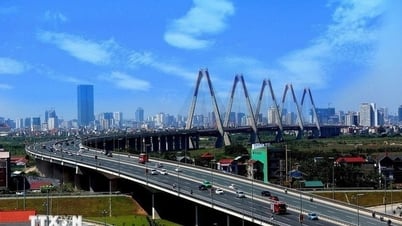


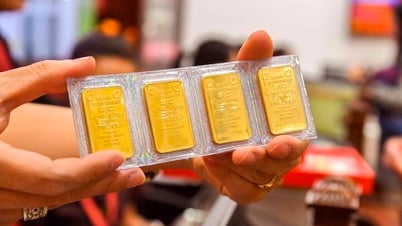



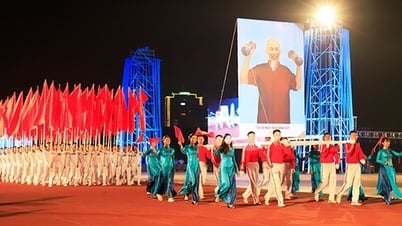
























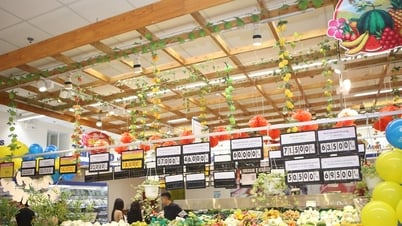

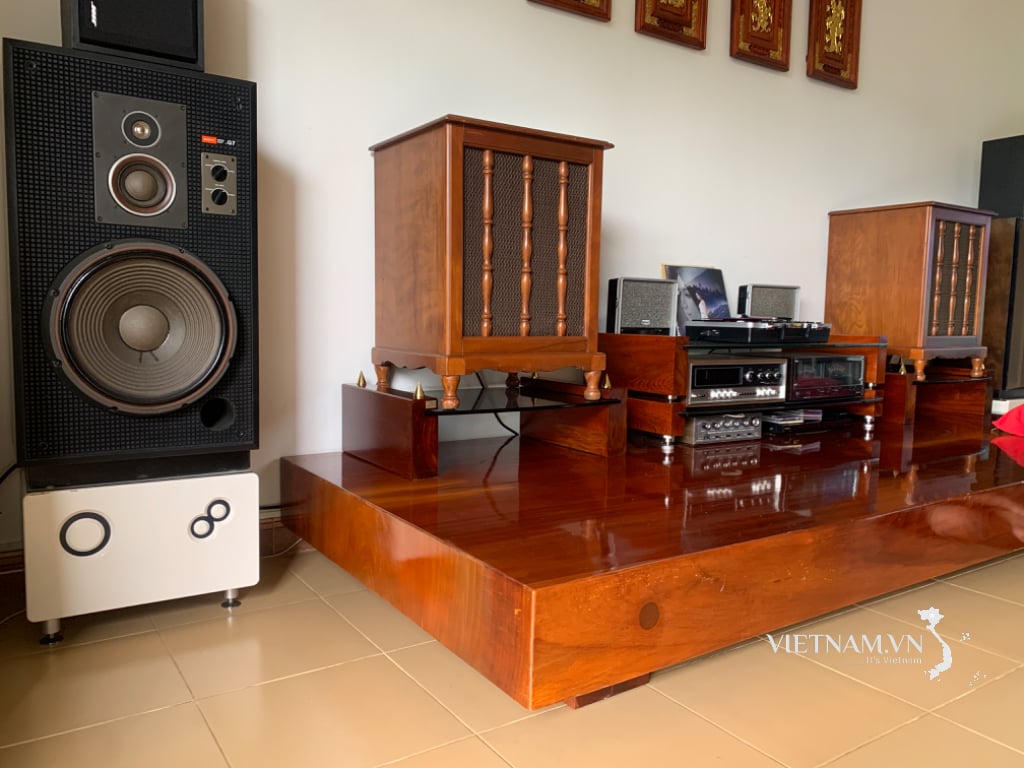



Comment (0)